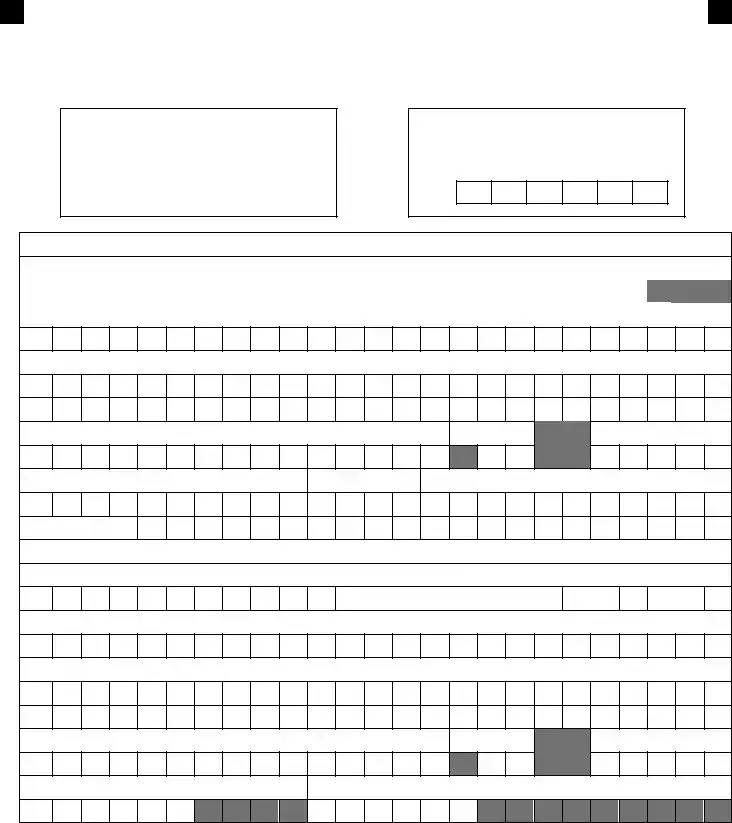The North Carolina New Hire Reporting Form shares similarities with the Federal I-9 Employment Eligibility Verification form. The I-9 form is another essential document employers in the United States must complete for every employee to verify their eligibility to work in the country. Like the New Hire Reporting Form, the I-9 requires employers to fill out detailed information about the employee, including their name, address, and employment eligibility documentation. Both forms are crucial for compliance with U.S. employment laws, ensuring employees are legally allowed to work and properly reported to the relevant authorities.
Similarly, the W-4 form, which the IRS requires, is another document related to the New Hire Reporting Form. When employees start a new job, they fill out the W-4 form to indicate their tax withholdings. Employers in North Carolina may submit a copy of the W-4 form as part of fulfilling the New Hire Reporting requirements, provided the employee's date of birth and date of hire are included on the form. Both forms play a significant role in the tax reporting and compliance process, ensuring accurate withholding and reporting of employee taxes.
The state counterpart to the W-4, for example, North Carolina's NC-4 Employee's Withholding Allowance Certificate, bears resemblance to the New Hire Reporting Form in that it is another document newly hired or rehired employees may need to complete. Like the W-4, the state form helps determine the amount of state income tax to be withheld from the employee's paycheck. While the New Hire Reporting Form collects employment commencement details for state agencies, the NC-4 focuses on ensuring state tax compliance.
The Worker’s Compensation insurance forms that employers must fill out for coverage also align with the purpose of the New Hire Reporting Form. Although serving different aspects of employee welfare – the New Hire Reporting Form for employment tracking and the Worker's Compensation forms for injury and insurance reporting – both require detailed employee information upon the commencement of employment. They ensure adequate measures are taken for an employee's financial security in case of workplace injuries, and compliance with employment regulations.
Onboarding forms that employers use internally to integrate new employees into their systems also have similarities to the New Hire Reporting Form. While these forms might include information on company policies, employee benefits, and job expectations, they typically also capture the employee's personal and employment details, as required by the New Hire Reporting Form. This process ensures a comprehensive approach to gathering essential information that aligns with state and federal employment reporting requirements.
The Employment Eligibility Verification document for certain state benefits, which employees might need to complete to qualify for state-specific advantages like health insurance or retirement plans, is similar to the New Hire Reporting Form. Both types of documents collect detailed employment and personal information as part of the broader context of employment verification and benefits eligibility.
Unemployment Insurance (UI) registration forms that employers must complete when registering with their state's UI program share a goal with the New Hire Reporting Form: they gather critical information on employees for state records. These forms help in managing unemployment claims and ensuring that employers are compliant with state regulations governing unemployment benefits.
The OSHA 300 Log, which is used by employers to record workplace injuries and illnesses, shares with the New Opening Reporting Form the mandate of documenting significant details related to employment. Although serving the purpose of workplace safety and health monitoring, rather than initial employment reporting, both forms require meticulous record-keeping and adherence to regulatory standards.
Direct Deposit Authorization forms, often part of the onboarding packet, though focused on banking information for salary payments, require the collection of employee details similar to what is found on the New Hire Reporting Form. This similarity underscores the thoroughness needed in gathering employee information for various administrative and compliance purposes right from the start of employment.
Lastly, the Equal Employment Opportunity (EEO) Self-Identification Form, which employers may ask new hires to complete voluntarily, relates to the New Hire Reporting Form in the context of compliance and record-keeping. While the EEO form focuses on demographic information for federal reporting on workplace diversity, it aligns with the overall goal of the New Hire Reporting Form to document employee data comprehensively for compliance and reporting purposes.
